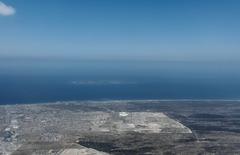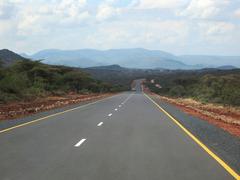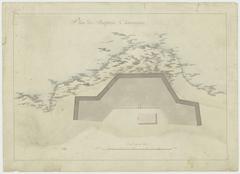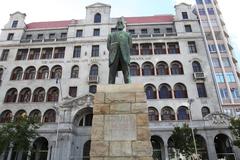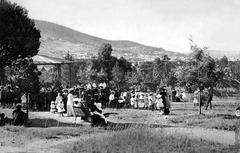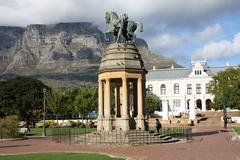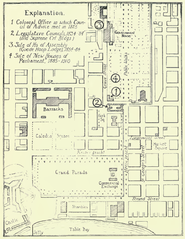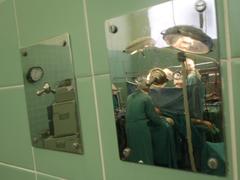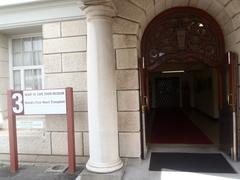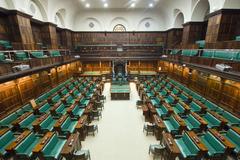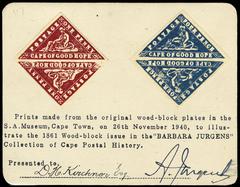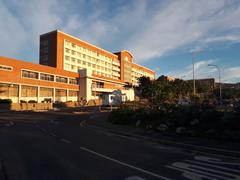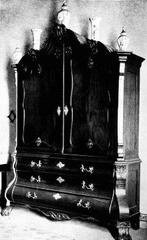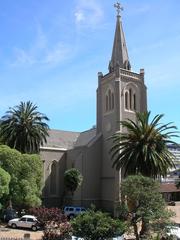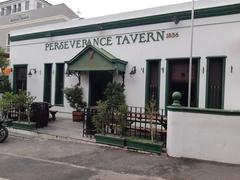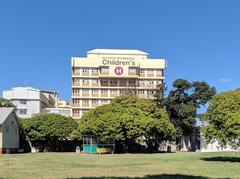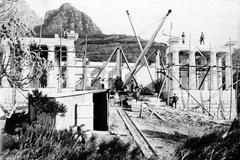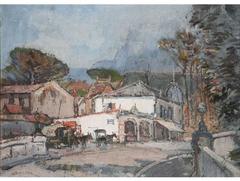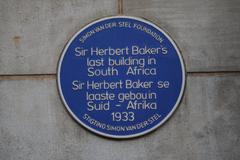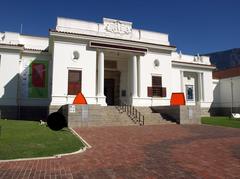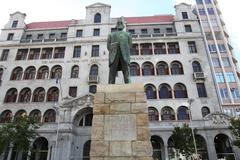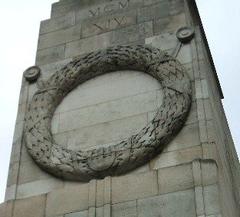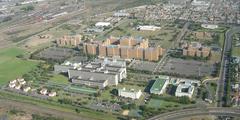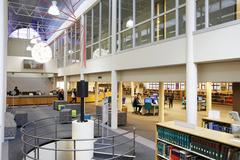Ysterplaat Cape Town: Visiting Hours, Tickets, and Historical Sites Guide
Date: 14/06/2025
Introduction: Discovering Ysterplaat’s Unique Heritage
Situated just north of Cape Town’s city center, Ysterplaat is a historic suburb renowned for its significant role in South African military aviation and diverse cultural legacy. Anchored by the Ysterplaat Air Force Base—established during World War II—this area has shaped the nation’s air defense and continues to preserve its military heritage through the South African Air Force Museum. A visit to Ysterplaat is both educational and inspiring, whether you’re passionate about aviation, history, or seeking a family-friendly outing.
The suburb’s transformation from undeveloped land to a military and industrial hub mirrors Cape Town’s broader urban evolution. Ysterplaat’s narrative is intertwined with colonial history, wartime advancements, and ongoing community engagement. For visitors, practical details such as museum hours, ticketing, accessibility, and nearby attractions—including Milnerton Beach and Table Bay Nature Reserve—ensure a fulfilling experience. Comprehensive information is available through the South African Air Force Museum Ysterplaat and Cape Town Travel Guide.
Contents
- Early Origins and Geographic Context
- Growth During Colonial and Modern Periods
- World War II and Ysterplaat’s Military Development
- The Cold War and Post-War Expansion
- South African Air Force Museum: Hours, Tickets, and Tours
- Accessibility, Travel Tips, and Nearby Attractions
- Demographic and Social Context
- Notable Historical Events and Legacy
- Frequently Asked Questions (FAQ)
- Conclusion and Travel Tips
- Sources
Early Origins and Geographic Context
Ysterplaat lies on the Cape Flats, bordering Milnerton and Table Bay. Its name, meaning “Iron Plate” in Afrikaans, likely refers to iron-rich soil or early industrial links. Before European settlement, the Khoisan people inhabited this area (History of Cape Town). The Dutch East India Company’s arrival in 1652 marked the beginning of Cape Town’s transformation into a key logistical hub.
Growth During Colonial and Modern Periods
In the 19th and early 20th centuries, Cape Town grew under Dutch and British rule. Ysterplaat remained mostly undeveloped until the early 1900s, when its flat terrain attracted military and industrial interests. Post-British victory at the Battle of Blaauwberg (History of Cape Town), infrastructure improvements set the stage for Ysterplaat’s future as an aviation center.
World War II and Ysterplaat’s Military Development
Ysterplaat’s defining moment came during World War II, with the establishment of the South African Air Force Base. The open land was ideal for runways and hangars, enabling crucial coastal defense, anti-submarine patrols, and pilot training (AFB Ysterplaat). In 1946, the base saw South Africa’s first Meteor III jet assembly and flight (Blaauwberg History), marking a leap into the jet age.
The Cold War and Post-War Expansion
During the 1950s and 60s, Ysterplaat expanded with new squadrons and advanced aircraft, including Harvards, Venturas, and Vampire jets (Blaauwberg History). The base’s strategic position near Cape Town’s industrial areas made it central to national security, rapid deployment, and border defense throughout the Cold War.
South African Air Force Museum: Hours, Tickets, and Tours
Today, Ysterplaat hosts the South African Air Force Museum, showcasing rare aircraft—like the last airworthy Avro Shackleton and the Douglas C-47 Dakota, famed for the coelacanth discovery.
Museum Visiting Hours
- Tuesday–Friday: 08:00–15:00
- Saturday: 09:00–13:00
- Closed: Sundays, Mondays, and public holidays
- Hours may vary for special events; check the official website for updates.
Tickets & Admission
- Admission: Free (donations welcomed to support preservation)
- Booking: Not required for individuals; group tours should book in advance.
Guided Tours & Events
- Free guided tours are offered, especially on Saturdays.
- Special events and airshows periodically take place—see the museum website for details.
Accessibility
- The museum is wheelchair accessible, with ramps and adapted restrooms.
- Some historic aircraft may have limited access for visitors with mobility challenges.
- Contact the museum in advance for specific needs.
Accessibility, Travel Tips, and Nearby Attractions
Getting to Ysterplaat
- By Car: 8–10 km north of Cape Town city center via N1 or M5; ample parking available.
- Public Transport: MyCiTi buses stop nearby; taxis and rideshares (Uber/Bolt) are convenient (Cape Town Travel).
- Directions: Google Maps
Safety
- The area is secure during museum hours. Use official transport options and remain vigilant with personal belongings (Cape Town Travel Safety).
Nearby Attractions
- Milnerton Beach: Relax with views of Table Mountain.
- Table Bay Nature Reserve: Scenic walks and birdwatching.
- Century City: Shopping and entertainment hub.
- Other Cape Town Historical Sites: Castle of Good Hope, Robben Island, District Six Museum.
Demographic and Social Context
According to the 2011 Census, Ysterplaat Airbase suburb had 838 residents—predominantly Black African (48%) and Coloured (32%) (2011 Census Profile). Many residents are connected to the airbase, reflecting the area’s strong military and community ties.
Notable Historical Events and Legacy
- World War II: Ysterplaat’s strategic role in air defense (SAAF Museum Ysterplaat).
- Jet Age Advancements: Assembly and operation of South Africa’s first jet aircraft (Blaauwberg History).
- Squadron Formations: Bases for 7, 17, and 21 Squadrons.
- Heritage Preservation: Ongoing public education through the museum (Museum Explorer SA).
Frequently Asked Questions (FAQ)
Q: What are the museum’s opening hours?
A: Tuesday to Friday, 08:00–15:00; Saturday, 09:00–13:00. Closed Sundays, Mondays, and public holidays.
Q: Is admission free?
A: Yes, but donations are encouraged.
Q: Are guided tours available?
A: Yes, especially on Saturdays and for groups by arrangement.
Q: Is the museum wheelchair accessible?
A: The main areas are accessible. Some historic aircraft may have limited access.
Q: Can I take photographs?
A: Yes, photography is allowed in most museum areas. Always check with staff for restrictions.
Q: How do I get there by public transport?
A: MyCiTi buses, taxis, and rideshare services serve the area.
Conclusion and Travel Tips
Ysterplaat’s Air Force Base and museum provide a rare opportunity to explore South Africa’s aviation heritage, technological evolution, and military history. With free admission, guided tours, and accessible facilities, it’s an excellent choice for families, students, and enthusiasts alike. The suburb’s proximity to other Cape Town attractions enhances its appeal as part of a broader itinerary.
Travel Tips:
- Bring photo ID for base security.
- Wear comfortable shoes and dress for changing weather.
- Check the museum’s website for current hours and event updates.
- Consider supporting the museum through donations or volunteering.
For planning tools, guided audio tours, and the latest updates, download the Audiala app and follow Cape Town’s heritage attractions on social media.
Sources
- South African Air Force Museum Ysterplaat
- CapeTownMagazine.com: Air Force Museum
- Museum Explorer: South Africa’s War and Conflict Heritage Museums
- South African Air Force Museum Official Website
- History of Cape Town, Wikipedia
- Ysterplaat, Wikipedia
- AFB Ysterplaat, South African Air Force
- Blaauwberg History: AFB Ysterplaat
- 2011 Census Profile: Ysterplaat Airbase
- Cape Town Travel
- Cape Town Travel Safety
